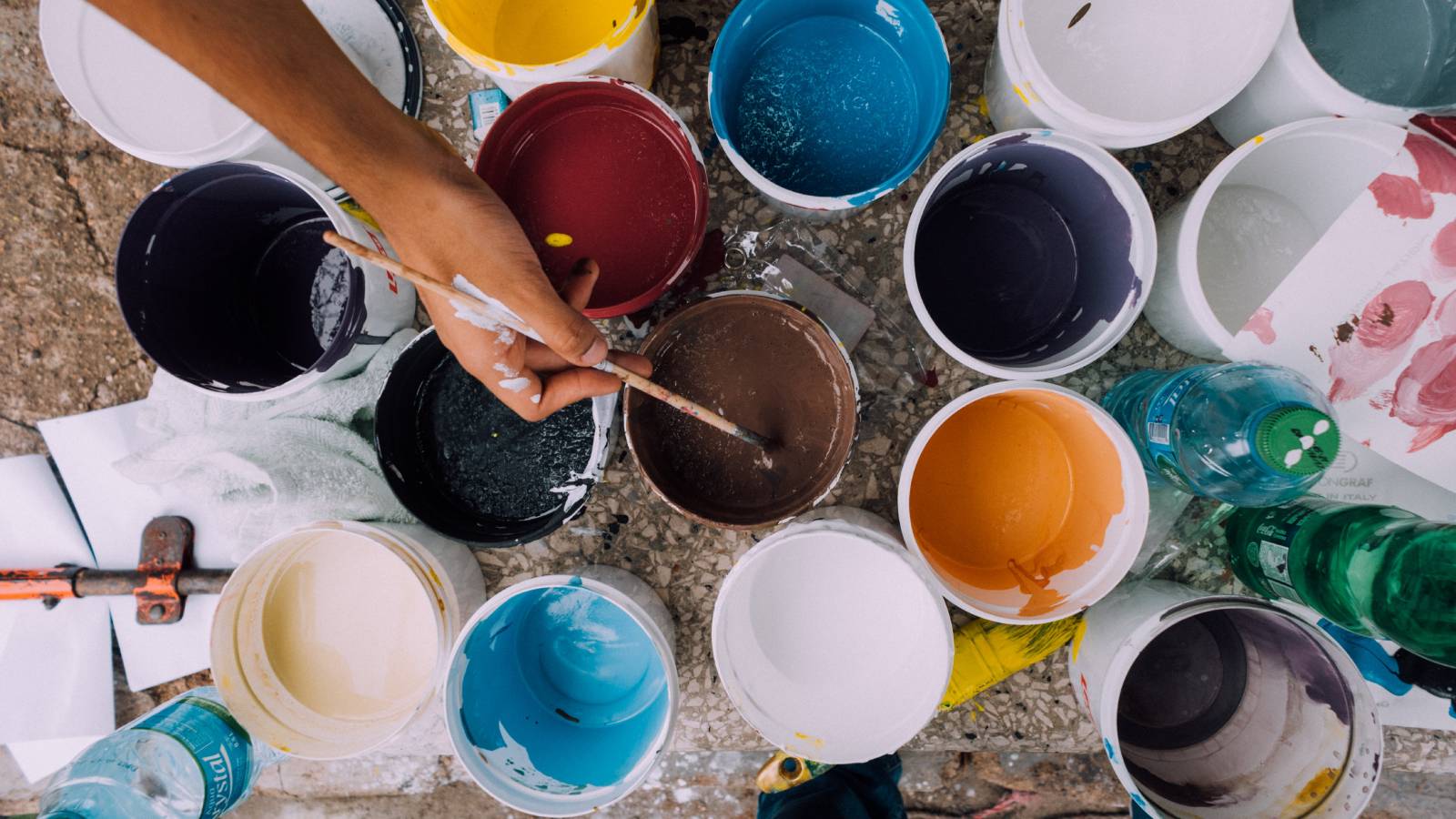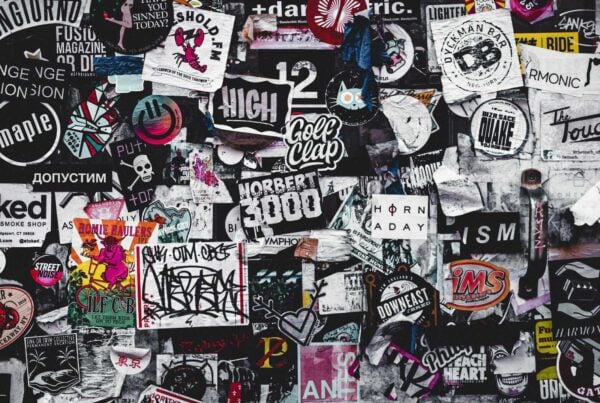Table of Contents
Embracing Sustainability in Art: Comprehensive Guidelines to Recycle and Reuse Art Materials
The intersection of art and environmental responsibility is a compelling space. Artists, by nature, are innovators, visionaries, and pioneers. As the world becomes increasingly aware of the need for sustainable living, artists too are exploring methods to align their creativity with eco-friendliness. Art, with its broad spectrum of materials and processes, has the potential to generate considerable waste. However, with conscientious practices, it’s possible to minimise this impact by recycling and reusing art materials. This comprehensive guide will provide detailed methods on how to make art more sustainable.
Guide to Printmaking and The Environment
Ways to Recycle Art Materials
Recycling is an essential aspect of sustainable art practice. By responsibly disposing of materials, artists can contribute to the reduction of waste. Here are several key areas where recycling can play a significant role:
1. Paint Containers
Artists frequently use a plethora of colours, each typically housed in individual containers. Most of these containers are made from plastic or metal, both of which are recyclable. The recycling process should include:
- Thoroughly rinsing the containers to remove any residual paint. Avoid allowing paint residues to enter the water system.
- Using any leftover paint for creating abstract backgrounds or mixing it with other colours to produce new hues before rinsing.
- Placing the clean, dry containers in the recycling bin.
2. Brushes and Palette Knives
Artists’ tools like brushes and palette knives are often made from recyclable materials such as metal and wood. However, they need to be clean before recycling. This process should include:
- Cleaning tools thoroughly using eco-friendly solvents.
- Considering alternative uses for these tools before deciding to recycle.
- Ensuring tools are dry before placing them in the recycling bin.
3. Paper and Canvas
Artists often choose to work on paper or canvas, both of which offer recycling opportunities.
- When using paper, artists should opt for recycled paper or paper made from sustainable resources. Old artworks on paper can be recycled or repurposed into new pieces of art.
- Canvas, on the other hand, offers multiple avenues for reuse. Old paintings can be painted over, or the canvas can be removed from the frame and recycled. The wooden frames can be reused for new canvases.
Innovative Methods for Reusing Art Materials
Reusing is another pivotal element of sustainable art practice. By finding new purposes for materials, artists can further reduce their environmental footprint. Here are some specific materials and methods for reuse:
1. Sculpture Materials
Sculpture materials such as wire, wood, and metal can often find a second life in new projects. Sculptors can:
- Keep leftover materials from previous projects and incorporate them into new artworks.
- Experiment with combining different materials in innovative ways.
2. Fabric Scraps
For artists who work with textiles, fabric scraps are a common byproduct. These can be creatively repurposed:
- Fabric scraps can be used to create patchwork, quilts, or smaller textile pieces.
- Mixed media art can utilise these scraps for adding texture and color.
3. Art Supply Packaging
The packaging that art supplies come in, such as plastic containers, cardboard boxes, and bubble wrap, also have potential for reuse:
- These materials can be used for storage, reducing the need for purchasing additional containers.
- Artists can incorporate these materials into their art projects. For instance, bubble wrap can be used to create interesting textures in paint.
Strategies for a More Sustainable Art Practice
In addition to recycling and reusing materials, there are several broader strategies that artists can adopt to make their practice more sustainable:
1. Buy Less
The most effective strategy to reduce waste is to buy less. This involves:
- Considering what materials are genuinely necessary before making a purchase.
- Avoiding impulsive buying and carefully planning out the materials needed for a project.
- Using materials on hand to the fullest extent possible before buying new ones.
2. Choose Eco-Friendly Brands
Some art supply brands are more committed to sustainability than others. Artists can support these brands by:
- Conducting research to identify which brands use sustainable practices and materials.
- Choosing art supplies that have been produced responsibly, with an emphasis on renewable resources and minimal packaging.
- Supporting local artists and suppliers who use sustainable materials.
3. Participate in Art Material Swaps
Art material swaps are a creative and communal way to reuse materials. These events:
- Allow artists to exchange materials they no longer need for materials they can use.
- Foster a sense of community and collaboration among artists.
- Promote the sharing of resources, reducing overall consumption.
4. Donate Unused Supplies
If artists have art materials that they’re not using, donating art supplies is a viable option. Donations:
- Reduce waste by putting unused materials to good use.
- Support local art communities, schools, and community centres.
- Help other artists, especially those who might not have easy access to art supplies.
The Environmental Impact of Inks and Paints: Issues and Solutions
Inks and paints have become indispensable tools in the realm of art, used to breathe life into ideas and create stunning visual narratives. However, when not handled properly, these mediums can pose significant environmental challenges, particularly when they enter our water systems.
The Problem with Inks and Paints
Artistic inks and paints often contain heavy metals such as cadmium, lead, and chromium. When these substances enter our water systems, inks and paints can have damaging effects on aquatic life and can even make their way into our drinking water, posing potential health risks. Moreover, inks and paints can also contain volatile organic compounds (VOCs) which contribute to air pollution when they evaporate.
This contamination primarily occurs in two ways. First, when artists rinse their brushes or tools in a sink, the residues wash down the drain and eventually enter our water systems. Secondly, improper disposal of leftover paints and inks can also lead to these harmful substances seeping into the groundwater.
Reducing the Impact
Thankfully, there are several measures artists can take to minimise the environmental impact of their paint and ink usage.
1. Responsible Cleaning Practices
Instead of rinsing brushes directly in the sink, artists can adopt a two-container cleaning system. The first container is used to rinse off the majority of the paint or ink, and the second one is used for a final rinse. The dirty water from the first container can be allowed to sit undisturbed. Over time, the paint particles will settle to the bottom, allowing the cleaner water at the top to be carefully poured off. The remaining sludge can then be disposed of in a responsible manner, such as taking it to a local hazardous waste collection facility.
2. Eco-friendly Art Supplies
Artists can also opt for more eco-friendly art supplies. There are numerous brands on the market now that offer non-toxic, water-based inks and paints. These products are free from heavy metals and VOCs, making them a safer choice for both the artist and the environment.
3. Proper Disposal of Leftovers
Artists should never pour leftover paints or inks down the drain. Instead, they can be stored for future use, donated to others, or taken to a hazardous waste collection facility. Some companies even specialise in recycling old paints and inks, turning them into new products.
4. Education and Awareness
Finally, spreading awareness about the environmental impact of inks and paints can go a long way in promoting sustainable practices. Artists can share information with their peers, participate in workshops on eco-friendly art practices, and advocate for environmental responsibility within their communities.
By making these conscious choices, artists can continue to create beautiful works of art while also safeguarding our precious water systems. After all, in the grand canvas of life, every brushstroke counts.
Conclusion
By adopting these strategies for recycling and reusing art materials, artists can make a significant contribution to the sustainability movement. The art world has a unique opportunity to lead by example, demonstrating that creativity and environmental responsibility can coexist. Artists are, after all, visionary thinkers with the power to inspire change. The next time you engage in your artistic practice, consider how you can make it more eco-friendly. The planet and future generations will thank you.








